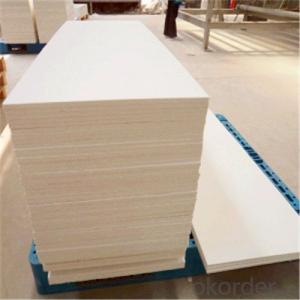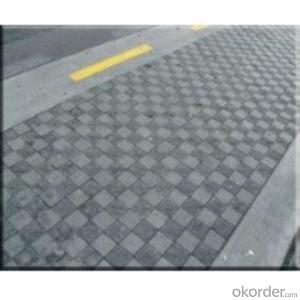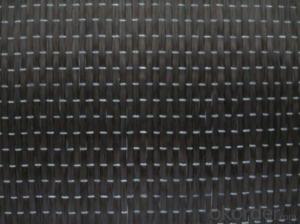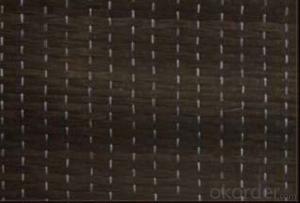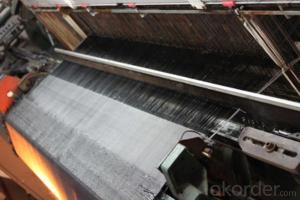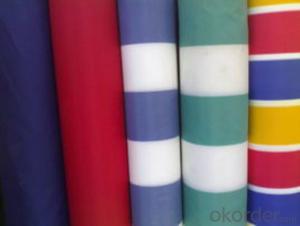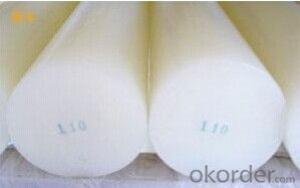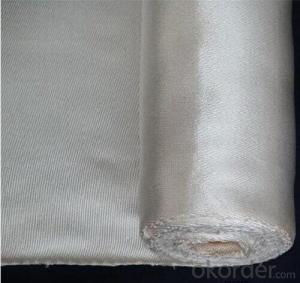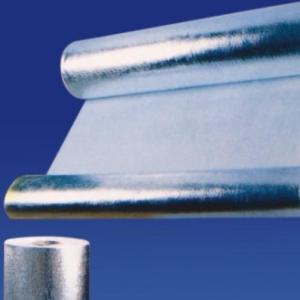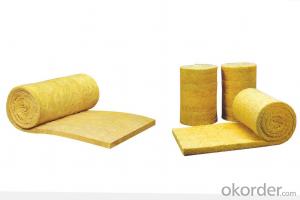PU Coated Fiberglass Fabric
- Loading Port:
- China Main Port
- Payment Terms:
- TT or L/C
- Min Order Qty:
- 10 Tons kg
- Supply Capability:
- 2*20FCL Per Month kg/month
OKorder Service Pledge
OKorder Financial Service
You Might Also Like
General Information of PU Coated Fiberglass Fabric
PU Coated Fiberglass Fabric is a fiberglass cloth coated with Polyurethane, and composite materials with multiple functions, the design of PU coated fiberglass fabric can adapt to different places.
It features good rebound resilience, toughness, softness, bright in color, superior resistance to wear, cold, oil, water, aging and weather. It also has the function of an antibacterium, and can also be used for mould proofing, heat-insulation and anti-ultraviolet.
Can be used for waterproofing in roof, underground projects, bridges, drainage channels, reservoir and disposal of sewage and etc, also applied to motor, chemical plant, equipment of power plant and so on.
Basic Info of PU Coated Fiberglass Fabric
Model NO.:CMAX-FF004
Type:Fiberglass Mesh
Function:Fireproof
Export Markets:Global
Additional Info of PU Coated Fiberglass Fabric
Trademark:CMAX
Packing:Plastic Bag+Carton+Pallet
Standard:ISO9001-2000
Origin:Jiang Su
HS Code:70193900
Production Capacity:2000000m2 Per Month
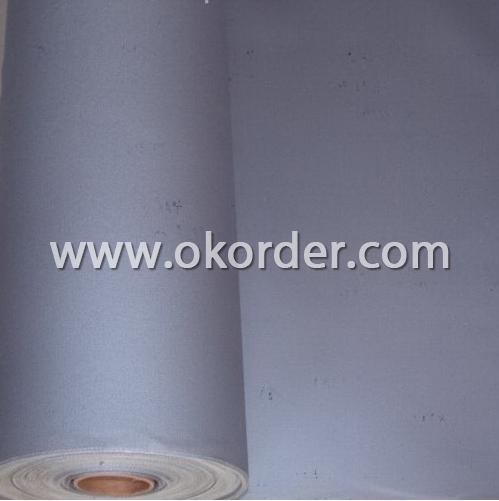
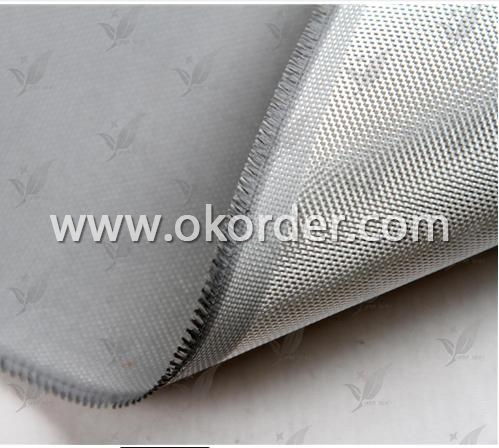
- Q:How do glass fiber textiles resist puncturing?
- The resistance of glass fiber textiles to puncturing is due to their unique properties and construction. Firstly, these textiles are composed of fine strands of glass fibers that are woven together to create a strong and durable fabric. The fibers themselves are extremely thin, often less than one-tenth the diameter of a human hair, resulting in a high concentration of fibers within the fabric. This high density serves as a formidable barrier against punctures. In addition, glass fibers possess a remarkable tensile strength, meaning they can withstand substantial pulling forces without breaking. This exceptional tensile strength allows them to endure significant amounts of force without tearing or puncturing. Furthermore, glass fiber textiles are frequently coated with a protective layer or resin, which further enhances their resistance to punctures. This coating acts as an additional barrier, reinforcing the fabric's durability and preventing sharp objects from penetrating its surface. Moreover, glass fiber textiles are renowned for their exceptional dimensional stability. This means that they maintain their shape and size when subjected to external forces. This property contributes to the fabric's structural integrity and prevents it from becoming weakened or torn, even under stressful conditions. In conclusion, the combination of the fine strands of glass fibers, high tensile strength, protective coating, and excellent dimensional stability make glass fiber textiles highly resistant to puncturing. They provide a reliable and long-lasting solution for applications that require protection against sharp objects or potential punctures.
- Q:Can glass fiber textiles be used in reinforcement of nanocomposites?
- Yes, glass fiber textiles can be used in the reinforcement of nanocomposites. Glass fibers provide excellent mechanical properties, such as high strength and stiffness, making them ideal for enhancing the overall strength and durability of nanocomposite materials. Additionally, glass fiber textiles can also improve the dimensional stability and impact resistance of the nanocomposites.
- Q:How durable is glass fiber textile?
- Glass fiber textile is highly durable due to the inherent strength and resilience of the glass fibers. It is resistant to wear, tear, and degradation caused by exposure to various environmental factors such as sunlight, moisture, and chemicals. Additionally, its high tensile strength allows it to withstand heavy loads without breaking or stretching, making it a reliable and long-lasting material.
- Q:How does glass fiber textile perform in terms of durability?
- Glass fiber textile is known for its exceptional durability. It is highly resistant to wear and tear, making it an ideal material for applications that require long-lasting performance. Unlike natural fibers, glass fiber textile does not degrade or weaken over time due to exposure to moisture, UV radiation, or extreme temperatures. It is also non-combustible and does not promote the growth of mold or mildew. Furthermore, glass fiber textile has high tensile strength, meaning it can withstand a significant amount of force without breaking or stretching. This makes it highly resistant to damage from pulling, twisting, or bending. Overall, glass fiber textile is renowned for its durability and is commonly used in industries such as construction, automotive, aerospace, and marine due to its ability to withstand harsh conditions and maintain its structural integrity over time.
- Q:Can glass fiber textiles be used in reinforcement of wood products?
- Yes, glass fiber textiles can be used in the reinforcement of wood products. Glass fiber textiles, commonly known as fiberglass, have high tensile strength and are lightweight, making them an ideal material for reinforcing wood products. Fiberglass can be embedded within wood products, such as plywood or laminated veneer lumber, to enhance their structural integrity and increase their resistance to bending, breaking, and warping. The fiberglass reinforcement improves the overall strength and durability of the wood product, making it suitable for various applications, including construction, furniture, and automotive industries. Additionally, the use of glass fiber textiles in wood products can also help to reduce their weight and increase their thermal and acoustic insulation properties.
- Q:Can glass fiber textile be used in reinforcement materials?
- Yes, glass fiber textile can be used as reinforcement material. Glass fiber textiles, also known as fiberglass fabrics, are made by weaving or knitting fine strands of glass fibers together. These fibers are known for their high tensile strength, lightweight nature, and excellent resistance to heat, chemicals, and electrical conductivity. Glass fiber textiles are commonly used in various industries for reinforcing materials. In construction, they are used in composite materials such as fiberglass-reinforced plastic (FRP) to enhance the strength and durability of structures. They are also used in the automotive industry for reinforcing parts like car bodies, interiors, and engine components. Moreover, glass fiber textiles find applications in aerospace, marine, and sports industries, where they are used to reinforce components like aircraft wings, boat hulls, and sporting equipment. They are also used in the manufacturing of electrical insulators, circuit boards, and high-performance textiles. The use of glass fiber textiles as reinforcement materials offers several advantages. They are lightweight, which reduces the overall weight of the final product. They have excellent strength-to-weight ratio, providing high tensile strength while keeping the weight low. They are also resistant to corrosion and degradation, making them suitable for outdoor and harsh environment applications. In conclusion, glass fiber textiles can indeed be used as reinforcement materials due to their high strength, lightweight nature, and resistance to various environmental factors. Their versatility and wide range of applications make them a preferred choice in many industries.
- Q:Can glass fiber textiles be used as reinforcement in composites?
- Yes, glass fiber textiles can be used as reinforcement in composites. Glass fibers are known for their high strength and stiffness, making them a popular choice for reinforcing materials such as polymers and resins. The textiles can be woven or non-woven and are commonly used in industries like aerospace, automotive, and construction for enhancing the mechanical properties of composite materials.
- Q:Can glass fiber textile be used in acoustic panels?
- Yes, glass fiber textile can be used in acoustic panels. Glass fiber textiles, such as fiberglass cloth, have excellent sound absorption properties due to their porous structure. When used in acoustic panels, the glass fiber textile absorbs sound waves and reduces the reflection and reverberation of sound, thereby improving the acoustics of the room. Additionally, glass fiber textiles are lightweight, durable, and fire-resistant, making them suitable for use in acoustic panels. They can be easily installed and are available in various thicknesses and densities, allowing for customization to meet specific acoustic requirements. Overall, glass fiber textiles are a popular choice for acoustic panels due to their effective sound absorption capabilities and versatility.
- Q:How do glass fiber textiles resist static electricity?
- Glass fiber textiles, unlike materials like cotton or wool, do not easily accumulate static charges due to their non-conductive nature. This is because glass, being primarily composed of silica, is a poor conductor of electricity. When glass fiber textiles come into contact with another object, friction can generate static electricity. However, the non-conductive nature of the glass fibers prevents the electric charge from building up on the textile's surface. Instead, the charge is quickly dispersed or grounded, preventing static electricity from accumulating. Furthermore, glass fiber textiles have low moisture absorption properties, which further reduces their susceptibility to static electricity. Moisture aids in conducting electrical charges, so the limited moisture absorption of glass fibers inhibits the formation and persistence of static charges. Overall, the non-conductive nature and low moisture absorption properties of glass fiber textiles make them highly resistant to static electricity. This makes them suitable for applications where controlling static charges is crucial, such as in electronics manufacturing or environments with flammable materials.
- Q:Are there any health concerns associated with glass fiber textiles?
- Yes, there are some health concerns associated with glass fiber textiles. Inhalation of glass fibers can cause respiratory irritation, lung inflammation, and in rare cases, lung scarring. Skin contact with the fibers can also lead to skin irritation and itching. However, these health risks are generally minimal when proper safety precautions are followed, such as wearing protective clothing and using proper ventilation.
1. Manufacturer Overview |
|
|---|---|
| Location | |
| Year Established | |
| Annual Output Value | |
| Main Markets | |
| Company Certifications | |
2. Manufacturer Certificates |
|
|---|---|
| a) Certification Name | |
| Range | |
| Reference | |
| Validity Period | |
3. Manufacturer Capability |
|
|---|---|
| a)Trade Capacity | |
| Nearest Port | |
| Export Percentage | |
| No.of Employees in Trade Department | |
| Language Spoken: | |
| b)Factory Information | |
| Factory Size: | |
| No. of Production Lines | |
| Contract Manufacturing | |
| Product Price Range | |
Send your message to us
PU Coated Fiberglass Fabric
- Loading Port:
- China Main Port
- Payment Terms:
- TT or L/C
- Min Order Qty:
- 10 Tons kg
- Supply Capability:
- 2*20FCL Per Month kg/month
OKorder Service Pledge
OKorder Financial Service
Similar products
New products
Hot products
Hot Searches
Related keywords




